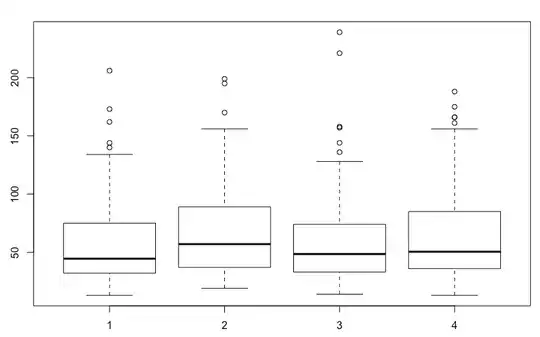I'm struggling with the data of an experiment in an online shop. Participants were presented with a picture of an item available in the shop and asked to browse trough the different categories and add the correct item into the shopping cart. The variable of interest is task completion time (i.e. how long it took participants to find the item and add it to the cart). I have four groups (different versions of the shop). As you can see in the boxplots, the distribution of completion times is right skewed and there are a bunch of outliers in all four groups.
I have tried several different ways - and combination of these - to account for the non-normal distribution and the outliers, which all lead to different results:
- Trimming of Outliers
- Winzorization (i.e. setting most extreme values to 95% percentile)
- Log-Transforming the data
Eventually, I want to be able to perform an ANOVA. In your opinion, which method for the analysis of completion time data is the most appropriate and are there other ways, which I have not mentioned?
